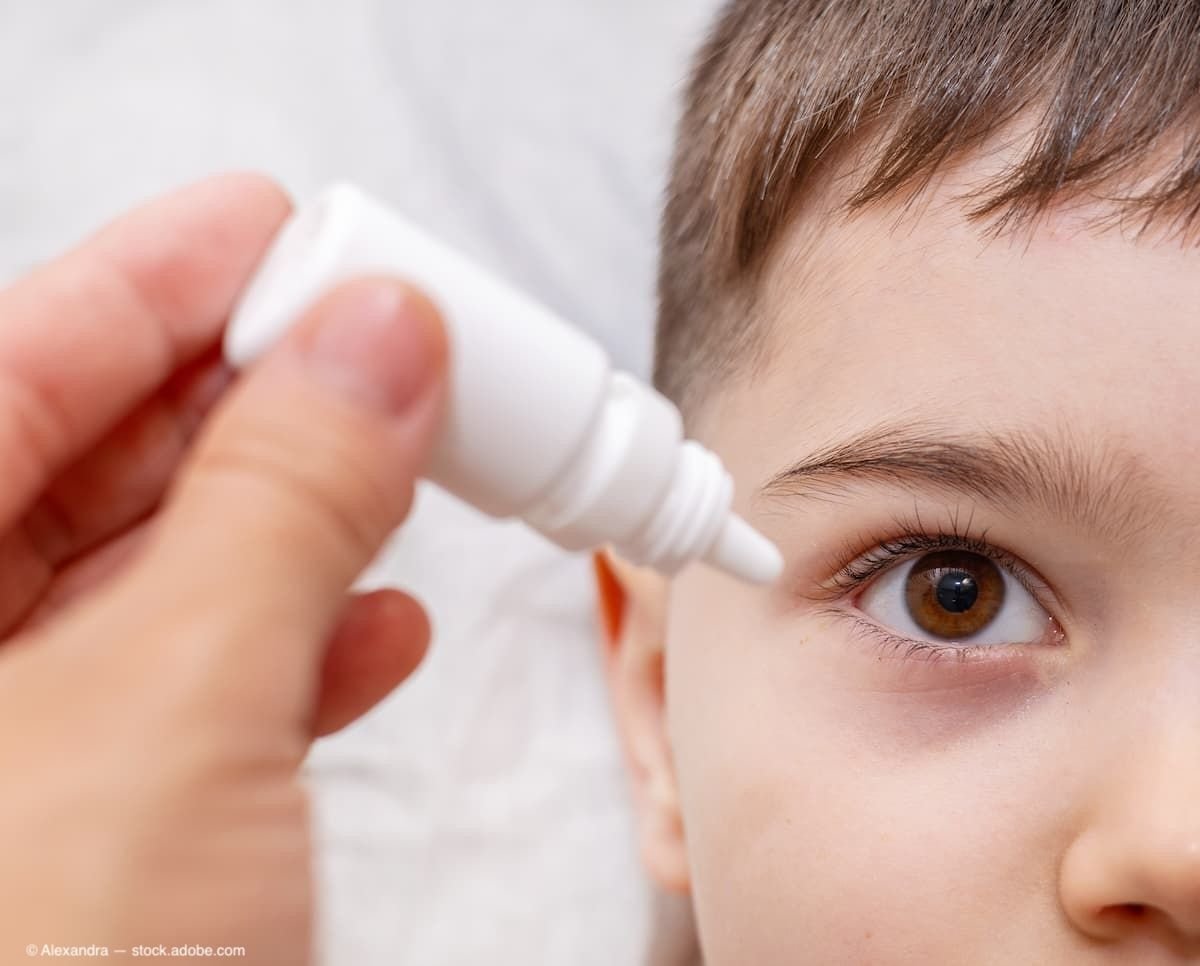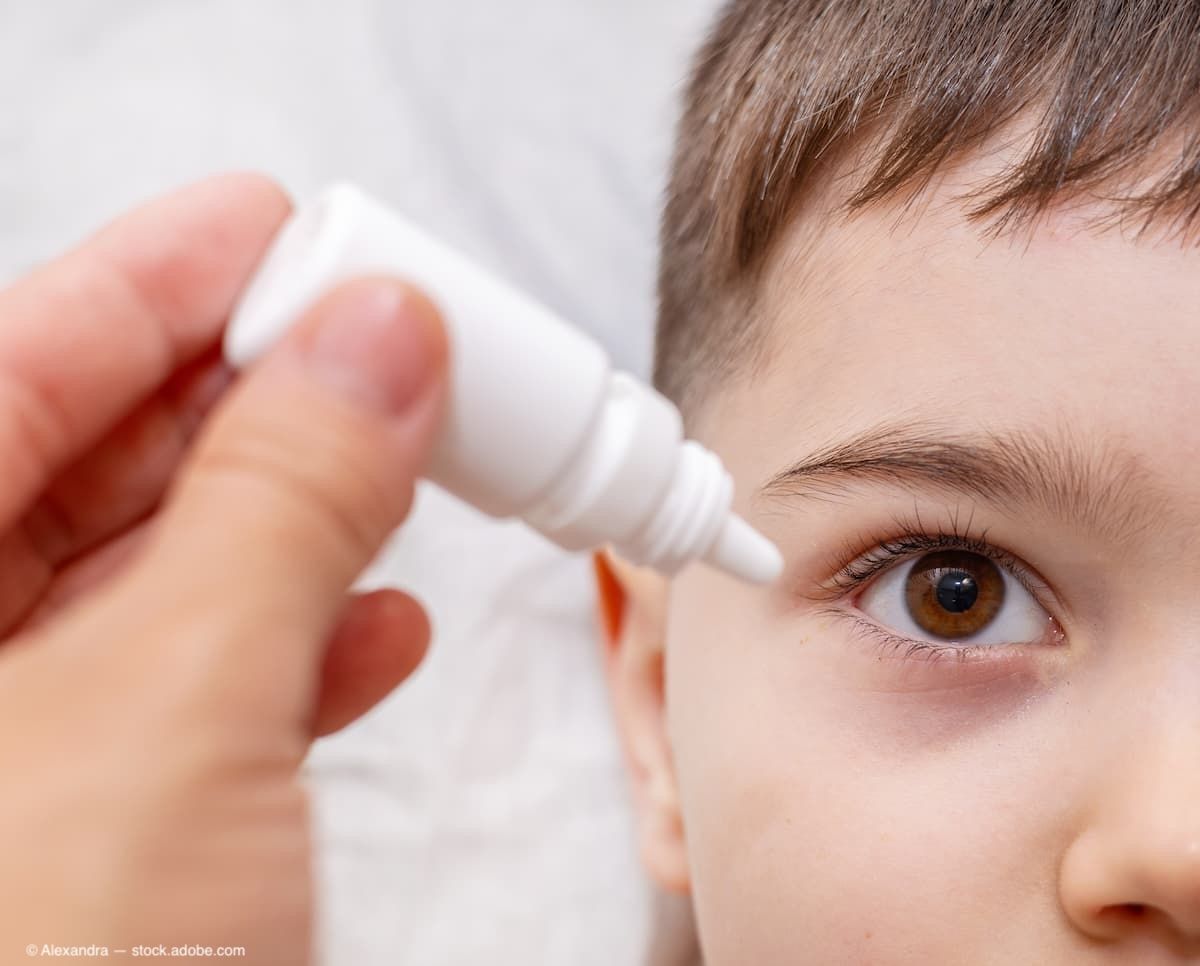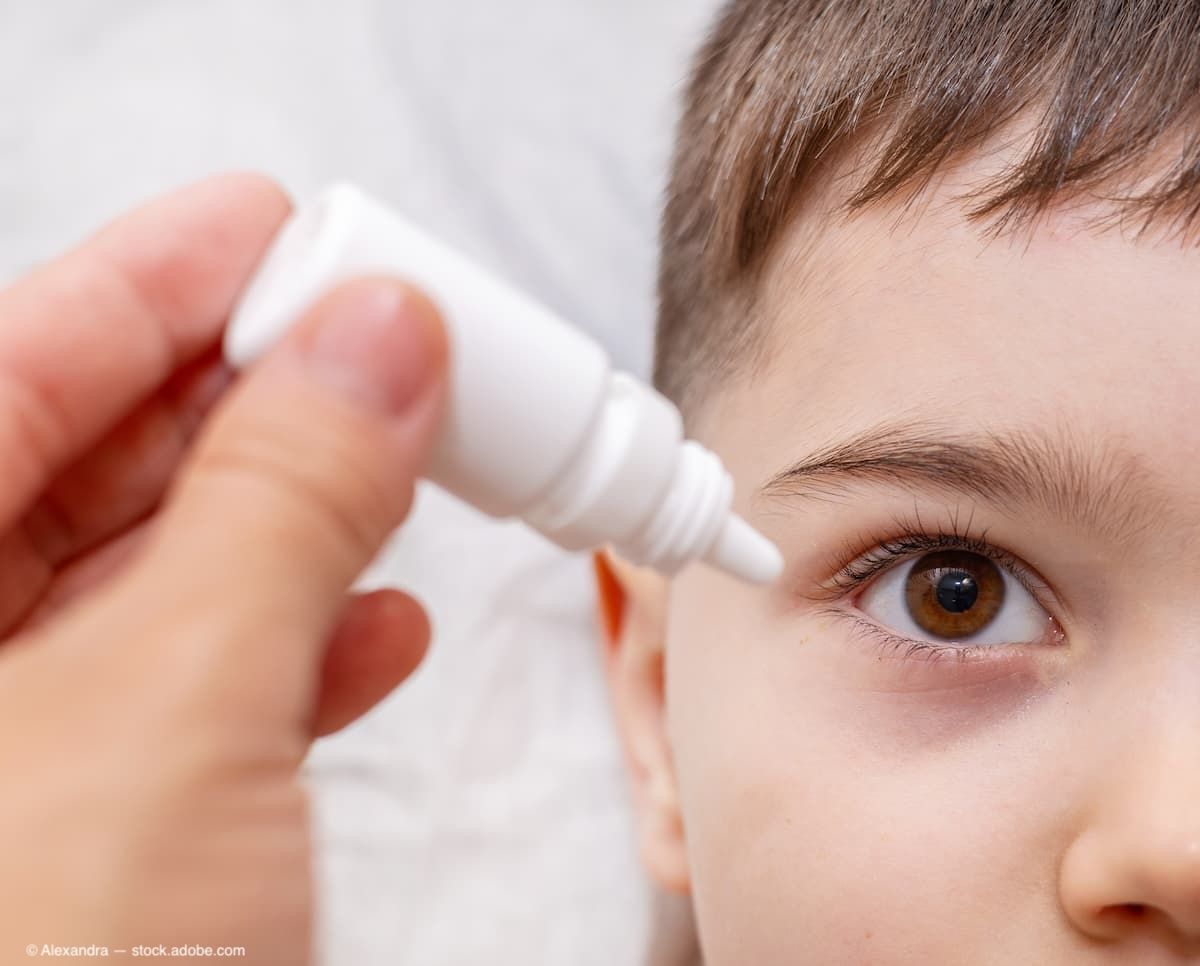
Newsletter Subscribe
Enter your email address below and subscribe to our newsletter


Enter your email address below and subscribe to our newsletter


(Image Credit: AdobeStock)

A comparison of 2 cycloplegic agents, atropine and cyclopentolate, in preschool children for cycloplegia found that atropine was associated with less myopic refraction compared with cyclopentolate and may potentially avoid the overestimation of premyopia prevalence,1 reported first author Haotian Wu, MD, and colleagues.
Wu is from the Shanghai Eye Diseases Prevention and Treatment Center/Shanghai Eye Hospital, School of Medicine, Tongji University, and the Department of Ophthalmology, Shanghai General Hospital, Shanghai Jiao Tong University School of Medicine, National Clinical Research Center for Eye Diseases, both in Shanghai.
The researchers noted the importance of comprehensive eye examinations, including cycloplegic refraction, for diagnosing and managing common pediatric ocular conditions, especially in children who fail vision screening.2 “Due to strong accommodation in children, cycloplegia is necessary to minimize accommodation-induced errors and obtain reliable refraction outcomes.2-4 Meanwhile, with myopia increasingly recognized as a major global public health concern, the usage of cycloplegic eye drops has become more widespread to facilitate the identification of children with myopia or premyopia and support early intervention,2,5,6” they commented.
However, because cycloplegic refractive outcomes differ in preschool children given either atropine or cyclopentolate, the researchers wanted to determine just how the agents differ.
Wu and colleagues conducted a post hoc analysis of two population-based studies, ie, the 2024 Preschool Children Refractive Development Pattern and Influencing Factors Study, in which the children were given atropine, and the 2013 to 2014 Elaborative Shanghai Childhood Ocular Refractive Development Study, in which the children received cyclopentolate.
Cycloplegia was induced by using either 1% atropine (twice daily for 4 days with an additional dose on day 5) or 1% cyclopentolate (dual administration 5 minutes apart) eye drops.
The main outcome was the difference between the noncycloplegic and cycloplegic spherical equivalent and the prevalence of refractive states in the two groups.
The study included 1761 children (3,048 eyes). The atropine group included 773 children (1,524 eyes; mean patient age, 4.62 years; 406 boys, 52.5%); the cyclopentolate group included 988 children (1,524 eyes; mean patient age, 4.62 years; 530 boys, 53.6%).
The investigators reported that the mean noncycloplegic spherical equivalents (SEs) were 0.30 ± 0.92 diopter (D) and 0.31 ± 0.76 D in the atropine and cyclopentolate groups, respectively (mean difference, −0.01 D; 95% confidence interval [CI], −0.07 to 0.05 D; P = 0 .72).
The mean difference between the noncycloplegic and cycloplegic SEs in the atropine group was 1.56 ± 0.72 D and in the cyclopentolate group 0.97 ± 0.70, with the mean difference between the two groups being 0.59 D (95% CI, 0.54-0.64 D; P < 0 .001).
The differences in the percentages of the refractive states between the atropine and cycloplegic groups, respectively, were as follows: moderate to high hyperopia (7.2% vs. 2.7% = 4.5%; 95% CI, 2.9%-6.0%; P < 0.001), low hyperopia (82.8% vs. 74.0% = 8.8%; 95% CI, 6.0%-11.8%; P < 0.001), premyopia (8.7% vs. 21.6% = −12.9%; 95% CI, −15.4% to −10.4%; P < 0 .001), and myopia (1.3% vs 1.8% = −0.5%; 95% CI, −1.3% to 0.4%; P = 0 .30).
In the discussion of their findings, the authors emphasized that “children with premyopia have a high likelihood of progressing to myopia within 1 to 2 years, and the fastest rate of change in refractive error and axial length occurred during the year before myopia onset rather than in any year after onset.7-11 Meanwhile, growing evidence suggests that early intervention in children with premyopia can effectively reduce the incidence of myopia and slow myopic shift.12-15 Thus, timely identification and management of premyopia are becoming increasingly important.”
Regarding the current study, they pointed out that “the observed intergroup differences in refractive state prevalence suggest that the choice of cycloplegic agent may lead to inconsistent classification—particularly in identifying premyopia. Such discrepancies may result in unnecessary or delayed interventions, potentially hindering efforts to prevent myopia.”
Wu and colleagues concluded, “This study found that use of atropine for cycloplegia in preschool children was associated with less myopic refraction compared with cyclopentolate and may potentially avoid overestimation of the premyopia prevalence.”
However, they advised that this investigation did not evaluate each cycloplegic agent in the same children.
Source: www.ophthalmologytimes.com
Author: | Date: 2025-09-30 10:00:00